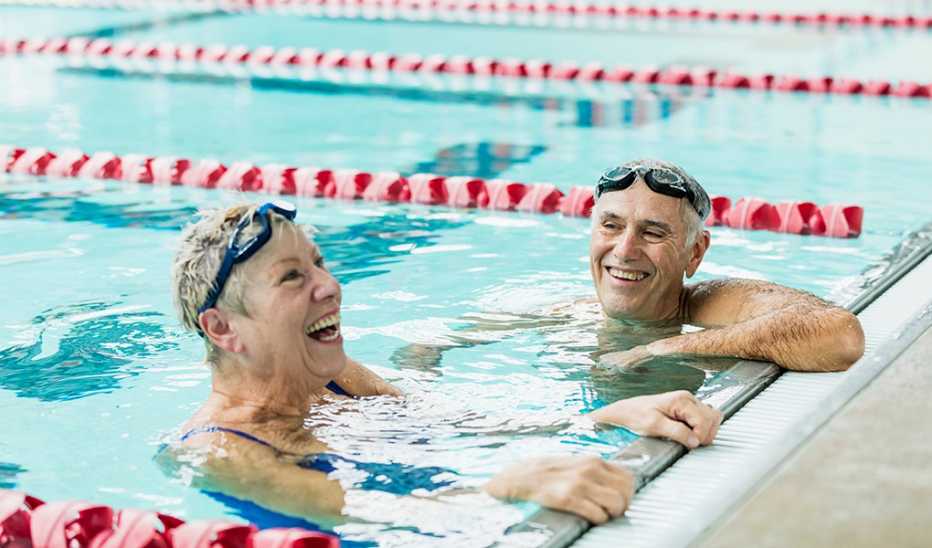Challenges


Exercise is one of the most powerful ways to support your brain health. People who are physically active tend to fare better in terms of cognition and memory, and they “show beneficial changes in brain structure and function,” wrote AARP’s Global Council on Brain Health (GCBH) in its report “The Brain–Body Connection.” That’s why ongoing exercise is one of Staying Sharp’s six pillars of brain health.
The Centers for Disease Control and Prevention recommends that adults get 150 minutes per week of moderate aerobic exercise (that could be 30 minutes on 5 days or any schedule that adds up to 150 minutes) plus two days a week of muscle-strengthening activities.
But any amount of exercise is better than none. Compared with people who were inactive, those who got 35 minutes or less per week of moderate-to-vigorous aerobic exercise slashed their risk of dementia by 41 percent in a study of 89,667 adults with a median age of 63 who wore fitness trackers for nearly three years. Of course, the participants who moved their bodies more saw greater benefits: The results, published in the Journal of the American Medical Directors Association in 2025, found that every 30 minutes of physical activity lowered the risk of dementia by an additional 4 percent.
“Exercise makes our brains work better, improves our thinking, memory and learning and induces brain growth as opposed to erosion,” says neuropsychiatrist Dr. John J. Ratey, an associate clinical professor of psychiatry at Harvard Medical School. Here’s a closer look at what happens to your brain when you work out.
Slower brain aging
The hippocampus, a region of the brain important to memory formation, typically begins to shrink as people age, although the rate and amount of shrinking varies. Enough shrinkage can eventually lead to memory loss. But working out can stop and even reverse these negative processes, triggering the growth of new cells and plumping up this vital brain region.
One study of 63 adults, average age 77, tested this theory by randomly assigning about half of the participants to a 12-month group fitness program consisting of walking plus strength, balance and flexibility exercises. The others, the control group, were assigned to listen to presentations about healthy aging. Results were based on the 63 participants who completed all brain scans at the beginning, middle and end of the study. The control group had much greater shrinkage in the left hippocampus over the course of a year compared with the exercise group, as reported in 2022 in NeuroImage Clinical.
One way exercise prompts the growth of new cells is by releasing a substance called brain-derived neurotrophic factor, or BDNF. “I call it Miracle-Gro for the brain,” Ratey says. “It’s truly a brain fertilizer. It helps grow the brain and makes it tougher and more resilient to stress and aging.” Physical activity has also been shown to increase the levels of other growth factors in the brain that aid the growth of nerve cells in the hippocampus, researchers reported in 2023 in Ageing Research Reviews.











More From Staying Sharp
Be a Critical Thinker
Turn an otherwise passive activity like watching TV into a mental workout
Your Brain on Walking
A trek by some trees can engage your mind and help you relaxCan’t Find Your Wallet, Glasses, Keys? Try This
Use visual cues to jog your memory